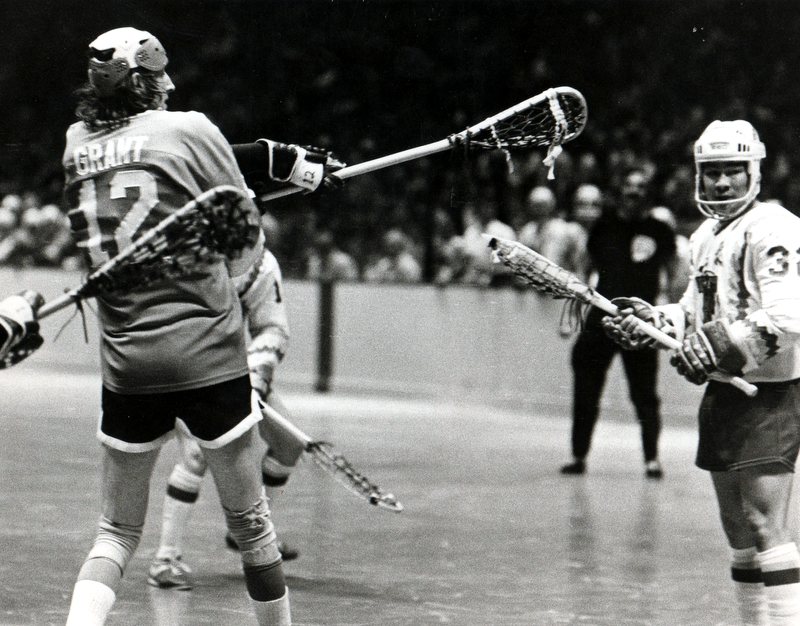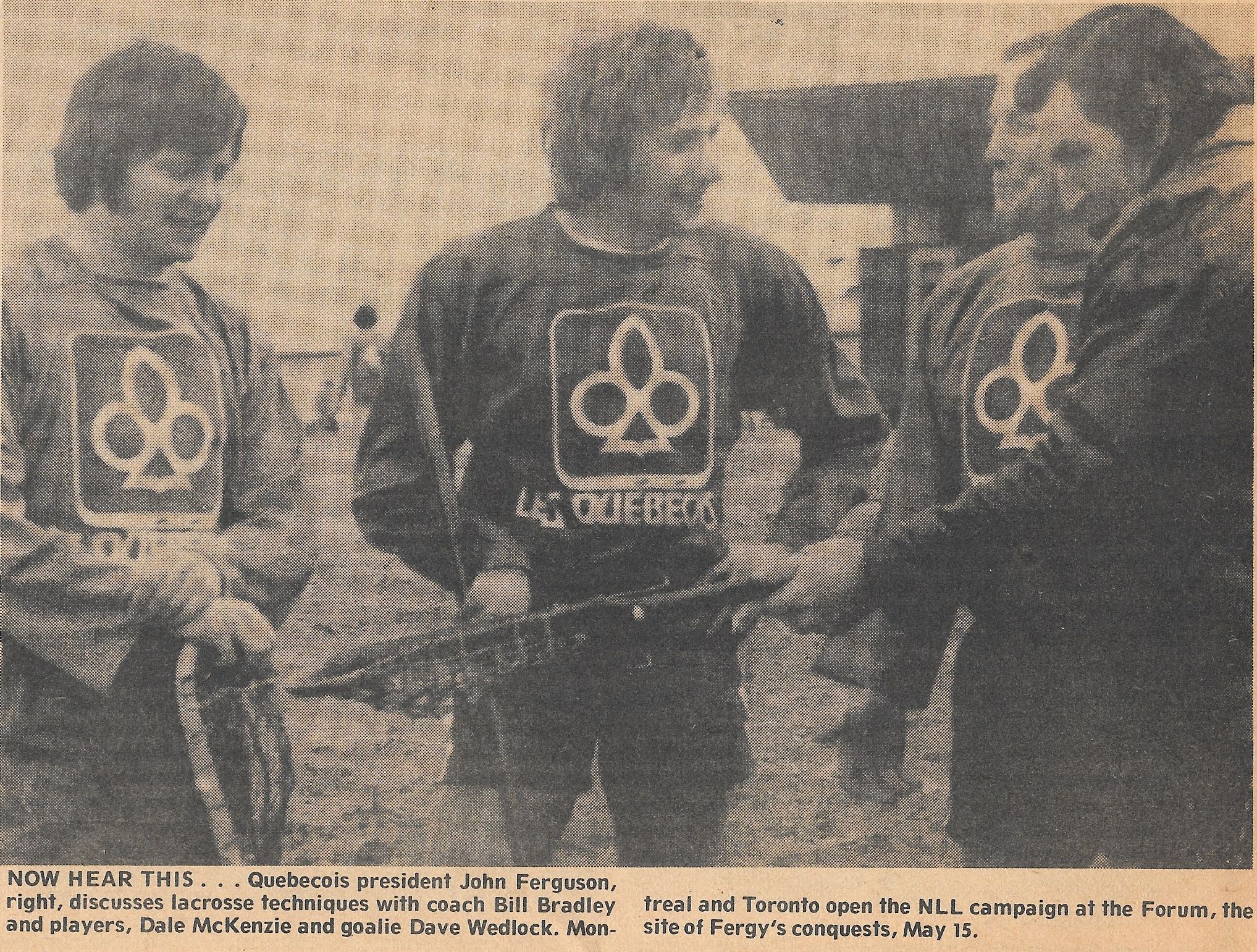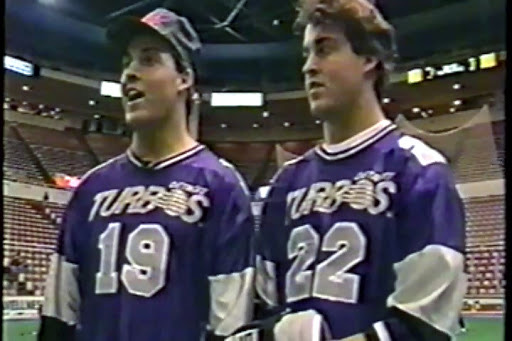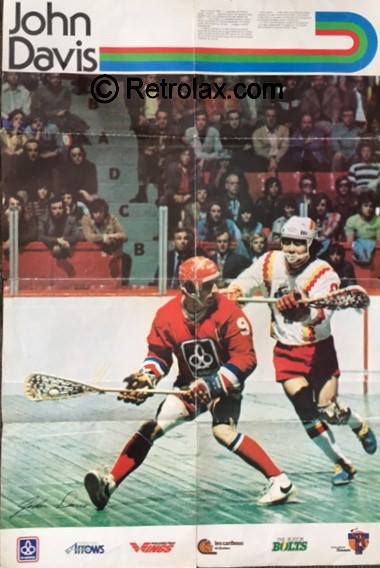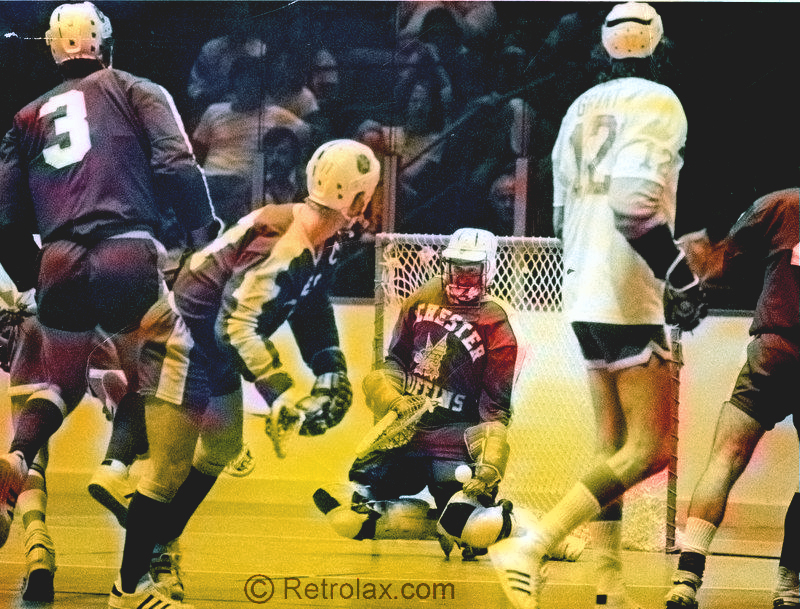by PHIL JOHNSON
Box lacrosse and hockey have numerous similarities. There are six men a side in each sport, lacrosse is played on the same size surface—without the ice, offensive patterns are similar, a major portion of the rules is interchangeable and, last but by no means least, there are Doug Favell, Rick Dudley and Duffy McCarthy.
All three play professional hockey and all three play in the National Hockey League.
Favell, a goaltender with the NHL Toronto Maple Leafs, is a lacrosse forward with Philadelphia Wings. Dudley, a forward with the NHL Buffalo Sabres, is leading scorer with the NLL’s high-flying Rochester Griffins, and Duffy McCarthy, with London Lions of the Detroit Red Wings’ organization last winter, is with Toronto Tomahawks.
Of the three, only Favell has seen limited action due to a slow recovery from a back ailment. He has also been out of lacrosse the longest, playing only sporadically over the past half-dozen years.
“The game has picked up so much, it has almost passed me by,” said the fleet Favell, a lacrosse player Toronto general manager Jim Bishop rates “an exceptional talent.”
“Not playing lacrosse for a number of years has certainly affected my play,” said the 29-year-old hockey goalie. “It will take a lot of work and concentration to get back to the level necessary to compete in this league.”
Favell doesn’t bother with comparisons of the two sports. In one he is required to stop pucks fired at him at speeds of up to 120 mph. In lacrosse, he’s engrossed in propelling an India rubber ball at others less fortunate than he at speeds, some say, of up to 160 mph. “I prefer to play forward in lacrosse.”
For Rick Dudley, lacrosse comes as a welcome relief. It is a sport the 25-year-old is a self-admitted “natural” at playing.
He played both lacrosse and hockey in the Mississauga, Ontario, minor systems and wound up with St. Catharines, Ont. juniors where he made the grade in hockey by beating the inflation out of every ego in sight.
Drafted into the NHL Minnesota North Stars’ organization, he spent two years riding in ambulances, an affinity for injury costing him demotion to “free agent” status.
Morley Kells, who is Dudley’s coach in Rochester, then advised Buffalo Sabres’ general manager Punch Imlach that Dudley deserved another crack at pro hockey. Imlach sent him to Cincinnati and Dudley turned his career around by turning the recipients of his wrath into hospital cases. “I figured if the ambulances were full enough, they wouldn’t have time for me,” Dudley said.
A solid performer in hockey who no longer needs to implant knuckle marks on foreheads, Dudley is a superstar in the National Lacrosse League. His scoring rate could push him past the 100-goal mark in only 40 league games.
Since the end of hockey season he has added 10 pounds of muscle to his 6-foot frame, bringing his rippling total to 200 pounds. “I’ll either be in tremendous shape by the time training camp (hockey) rolls around or I’ll be worn out,” he said. “Lacrosse is a far more grueling sport. At the end of a game I’m too tired to cough, whereas in hockey I’m nowhere near as played out. Part of the reason could be that I play on penalty-killing and powerplay units in lacrosse and in hockey I see only my regular shifts. Still, though, lacrosse is far more exacting.”
The toughest thing is the bruises, Dudley contended. “Some games you jog out onto the floor when a minute before you didn’t think you could bend over long enough to lace up your shoes. A good thing about lacrosse is fewer serious injuries. In hockey, there are many more knee injuries because a player lacks the balance on skates that he has on his own two feet. Besides, the skates will dig in and pop go the knees.”
It was an interesting winter for Duffy McCarthy, touring Europe—playing hockey outdoors, indoors and halfway between—in the Continent’s experiment with pro hockey.
He was pleased on his return to Canada to find that not only was there a new lacrosse league, but that he had been drafted by Tomahawks who would operate out of Toronto, a city adjacent to his Mississauga home.
At 5-foot-9 and 175 pounds, McCarthy hasn’t terrorized pro sport to the extent of Dudley, nor has he approached the performance in hockey of the skillful Favell. In lacrosse, however, he is every bit as good.
“I’d like to make a living playing lacrosse. This league is going to go and I’m going to be a part of it for as long as I can,” McCarthy said, echoing in part the sentiments of Philadelphia Flyers’ retired defenceman Barry Ashbee who said he would rather play lacrosse than hockey.
Ashbee, an executive with Philly Wings, John Ferguson, three-position man with Montreal Les Quebecois and Jack Bionda, Philly GM, have hockey backgrounds. Their theme is common—lacrosse is the better sport.
No wonder then that McCarthy, a hockey Lion in winter, is content to aim for excellence in the sport the Indians invented a couple of centuries ago as “baggataway.”





